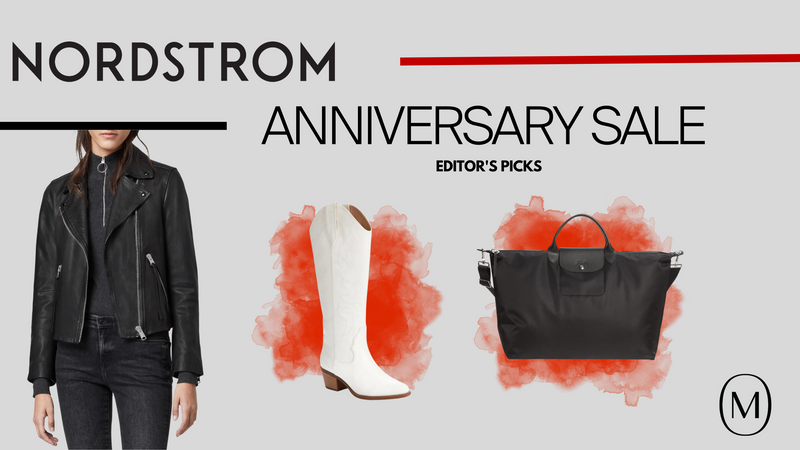The A–Z Guide to Maison Margiela
Unpacking the history of one of the most exciting—and elusive—houses in fashion

Four stitches. White lab coats. Tabi boots. Deconstruction. Face masks. Few brands have a more distinct identity than Maison Margiela. Founded by Martin Margiela and Jenny Meirens, Margiela’s creative and business partner, in 1988, the Parisian label is one of the most recognizable and influential in the fashion industry. You’d be hard-pressed to find a brand or designer that wasn’t inspired by Margiela, whether directly or indirectly.Today, Maison Margiela is led by John Galliano, who was named creative director in 2014 (Margiela left in 2009). Under Galliano’s vision, the brand still explores with the deconstruction and reconstruction of garments (a nod to Margiela), but is also introducing techniques Galliano’s known for—like cutting fabrics on the bias—and reshaping the tropes of fashion. It’s Maison Margiela through the eyes of one of the most imaginative designers of our time.From Margiela to Galliano, here’s how the Maison Margiela brand turned fashion upside.
Antwerp
Margiela attended Antwerp’s Royal Academy of Fine Arts, the same famed institution that spawned fashion talents such as Kris Van Assche, Haider Ackermann, Demna Gvasalia, and of course the Antwerp Six (Ann Demeulemeester, Dries Van Noten, Dirk Bikkembergs, Walter Van Beirendonck, Dirk Van Saene, and Marina Yee). Although Margiela is often cited as an honorary seventh member of the Antwerp Six, he graduated a couple of years before the collective came to be and didn’t show with them at London Fashion Week.

Bejeweled face masksCape Cod double-strap watch
Face masks have been part of Maison Margiela since models walked the runway with face coverings in the brand’s debut Spring/Summer 1989 collection. Margiela wanted the focus to be on the clothing, not who was wearing it. In 2012, Maison Margiela made a crystal-embellished version for the haute couture collection. It later appeared in other Maison Margiela couture shows and was reinterpreted for Kanye West, who worked with Maison Margiela on his Yeezus tour wardrobe in 2013 (one of the masks worn by West was listed on Grailed for $50,000). Earlier this year, Offset wore his own bejeweled mask to the Vanity Fair Oscars party. His accessory wasn’t Maison Margiela, but it was definitely inspired by the original.During his first year as creative director of Hermès in 1997, Margiela invented the twice looping straps featured on the Cape Cod watch face. The Double Tour strap, as it’s called, was inspired by a twice-wrapped belt Margiela created for his eponymous label that was made using a long leather strap originally meant to fasten a suitcase. The original watch and strap is still currently sold by Hermès and has become a cult object. The Hermès Apple Watch also used the same Double Tour strap.

DeconstructionistElastic band “Dollar Bills” walletFour white stitches
A master deconstructionist, Margiela carefully took things apart and reassembled them in unexpected ways. Gloves became a corset-like top; a sweater was made with surplus army socks. Frayed hems and exposed seams and stitching were also signatures of his long before the fashion industry was flooded with them. Margiela left each piece better than when he found it.In 2008, Maison Margiela released a “Dollar Bills” wallet—a fake laminated $11 bill adhered onto a leather bifold wallet with a black elastic band around it (there are also versions using bills in euros and British pounds). The accessory, a classic Margiela take on an everyday item (see: the faceless watch), is extremely rare and currently being resold for nearly $9,000.Every label has its own logo and branding. Maison Margiela’s, of course, was the most discreet: four white stitches visible from the outside. When Margiela launched the brand in 1988, these four white stitches were a practical consideration—they were used to sew on a completely white label and were originally loosely done so they could be easily removed if you wanted an unbranded garment.

The Greta Garbo of fashionHermès
At a time when designers were becoming celebrities, Margiela preferred anonymity and directed the attention to his work. He didn’t give interviews, has appeared in almost no photos, and has never taken a catwalk bow (customary for most designers). He didn’t appear in his biopic, Martin Margiela: In His Own Words; just his voice. No one outside his inner circle truly knows what he looks like. But according to Jean Paul Gaultier, whom Martin assisted earlier in his career, “Martin is very tall.”Margiela served as the creative director of Hermès from 1997 to 2003. At the time, many wondered how such an avant-garde designer would interpret the polished look of the legendary French luxury house Hermès. “They were having fantasies of Martin cutting the Kelly [bag] in two,” Kaat Debo, director of Antwerp’s ModeMuseum and curator of the Margiela: The Hermès Years exhibition, has said. For years, his collections for the luxury house were misunderstood and underappreciated. The clothes, which were inspired by 1920s sports and leisure clothing, were simple, monochrome, and focused on quality. But the press didn’t get the quietness of his designs; they wanted garments that wowed. Look around now, though, and you’ll see touches of Margiela’s work at Hermès all over fashion today. It was “quiet luxury” before there was a term for it.

Influence
Margiela is a designer’s designer. He’s influenced some of the most important fashion talents of our time. After seeing Margiela’s Spring/Summer 1990 show, Raf Simons switched his career from furniture design to fashion. “Three girls came out. It was a split second—I knew I wanted to do fashion,” Simons, who later referenced Margiela’s Fall/Winter 1997 collection in his own Fall/Winter 2016 men’s line, has said. Marc Jacobs told Women’s Wear Daily that “anybody who’s aware of what life is in a contemporary world is influenced” by him. Alexander McQueen called his designs “modern classics.” Gvasalia, whose first job after graduating from the Royal Academy of Fine Arts Antwerp was at Maison Margiela, has likened his time at the Parisian house to a master’s program. “Working there I discovered that beauty can be found in everything around us, mundane objects can be turned into creative concepts and become a completely new product,” he told i-D. Even Gvasalia’s brother, Guram, creative director at VETEMENTS, wrote his thesis on Margiela while attending the London College of Fashion.

John GallianoKanye West
For a few years, the brand refused to officially name a new designer after Margiela’s retirement in 2009. But that changed in 2014 when Renzo Rosso, president of Only The Brave, which bought a majority stake in Maison Martin Margiela in 2002, announced that Galliano would be the new creative director of the maison. The appointment was Galliano’s first full-time gig since he was fired by Dior in 2011 after making anti-Semitic remarks.The rapper’s love for Margiela is well-documented. He often praised the brand on his blog KanyeUniverseCity.com, rapped about it (“What’s that jacket, Margiela?”), and wore many of the designs. In 2016, after reactivating his Instagram account, he posted 99 photos in the span of three hours of Margiela designs (women’s, men’s, the tabi boots) from the late ‘90s to early 2000s. A digital mood board of sorts. But the most memorable Kanye/Margiela moment may be his Yeezus tour wardrobe: ten couture pieces, 20 ready-to-wear looks, an exclusive pair of sneakers, and bejeweled masks custom-made just for him. Without a doubt, Kanye introduced Margiela to a wider audience and certainly hip-hop.

Lab coatsMMM fax machine
The Maison Margiela team—everyone from interns and retail employees to head designers—all wear lab coats in the maison’s signature color, white. These “blouse blanche,” complete with multiple pockets, wrap fronts and side ties, was a uniform set in place by Margiela and meant to emphasize a sense of collective identity. To Margiela, the color white, much like the lab coats, also represents the brand’s philosophy of being “a symbol of unity and purity.” Today, Galliano and his team still wear white lab coats.Margiela and his team didn’t do interviews and preferred to respond to journalists via fax. They’d later use email, but never conducted any in-person conversations.

Numbers
Ever wonder what the white label with numbers on Margiela garments mean? In 1997, the brand introduced white labels that display the numbers zero to 23. Each number corresponds to a product line and is circled to indicate the collection to which the item belongs.0 Artisanal collection for men and women 1 Women’s collection 3 Fragrances 4 Women’s wardrobe basics 6 MM6 8 Eyewear collection 10 Men’s collection 11 Accessories 12 Jewelry 13 Objects and publications 14 Men’s wardrobe 15 A short-lived mail-order collection with three Suisses 22 Shoes

Other HalfPatrick ScallonQualityReplica sneaker
There would be no Maison Margiela without Margiela’s “other half”: Jenny Meirens. The pair met when Meirens was judging the Golden Spindle Award in 1983, in which Margiela was a contestant. Though the designer didn’t win, she was a fan of his from the start and even offered to sell his collection at her seminal boutique, Crea, in Brussels. Meirens and Margiela had a special kinship, like two creative soulmates. They dreamed up what Maison Margiela would be at a little bar in Mantova, Italy—Meirens focused on the business and strategy, Margiela on the designs. And for 16 years—she retired in 2003—she worked alongside him to define a new kind of fashion. She casted models from the street (and often preferred to hire people with no fashion background), brokered Margiela’s deal at Hermès, and more. “We intrigued, challenged, and amazed each other,” Margiela told T Magazine in 2017. “It became a full symbiosis. For a young fashion designer, the beginning is utterly important, so I remain grateful that Jenny managed it to structure my wildest dreams into a viable business.”Patrick Scallon was Maison Margiela’s communications director from 1993 to 2008. Because Margiela’s identity was something of a mystery, some believed Scallon was actually Margiela. Scallon left Maison Margiela following the designer’s retirement and joined Dries Van Noten as the label’s communications director. Last year, he announced his departure from Dries Van Noten after almost 14 years at the brand.For Margiela, all roads led to clothing. He wanted people to focus on the garment and the quality of the designs. It’s one of the reasons why he chose to stay anonymous, why models wore masks, and even why the branding was discreet. “When we first started out in 1988, it was the biggest moment for labels,” Margiela told Time Magazine. “I want people who don’t know who made one of my garments to first say, ‘This is nice,’ then the salesperson can tell them who made it. If you see something in the cloakroom in a restaurant, then you will never know who it’s by, but I don’t care.”The low-top, minimal sneaker was first introduced in 1999 as part of the Artisanal line. It was inspired by the standard-issue German Army Trainer designed by Adi Dassler, founder of adidas, and his brother Rudolf, founder of Puma, which Margiela discovered in Austria three years prior. It’s since become Margiela’s most recognizable shoe—besides the tabi of course.

Stockman topTabi boot
Maison Margiela’s Spring/Summer 1997 collection introduced what would become one of the most crucial pieces in Margiela’s work: the Stockman top. A reference to the process of clothing construction, the linen top resembled a Stockman mannequin on which garments are made complete, with a nod to Stockman trademark stencils (“42” at the neckline and “semi-couture” at the bottom). It’s one of the most important pieces in fashion history, so rare that they’ve been exhibited in various museums and are being resold for almost $20,000.Few designs are as memorable and thought-provoking as Margiela’s tabi boot. Although Margiela didn’t invent the tabi (it traces back to fifteenth-century Japan), he paid homage to a traditional piece, tweaked it slightly, and made something that now has a cult-like following. As the story goes, Margiela was inspired to create his own version of the tabi after a trip to Japan in the late 1980s. “My memory went back to the day we went to Tokyo for the first time, when we saw street workers in their flat cotton tabi shoes,” he recalled in the Martin Margiela: In His Own Words documentary. “I thought, OK, why shouldn’t I do a soft tabi shoe but on a high heel? And then the idea was born.”In addition to the original ankle boot (which first appeared in Maison Margiela’s debut 1989 show), the tabi has been reconceptualized in different forms, including a sneaker (in collaboration with Reebok), knee-high boot, ballet flat, loafer, clog, and heels. Unique versions have also popped up. Some are hand-painted in a throwback to when Margiela was forced to repurpose unsold boots and paint them in new colors for future shows due to budget constraints; a 1996 iteration, called the Topless tabi, from Spring/Summer 1996, is a sole-only shoe meant to be strapped to the foot with tape.

Unconventional shows and invitesVisual arts
Maison Margiela is often considered an “anti-fashion” brand because Margiela and his team did things that were not the norm. Take the fashion shows, for instance. Models were street-casted (not yet common in the industry). Shows were set in gritty locations—a graveyard, a Salvation Army store, an old subway station—at a time when most designer collections were unveiled at glamorous destinations close to the Louvre. At times, models didn’t even walk the show at all. Men in white lab coats presented the Spring/Summer 1998 collection on hangers akin to an auction. For Fall/Winter 1998, marionettes created by stylist Jane How replaced models. Even the invites were innovative: a classified ad for Fall/Winter 1989, a telegram for Spring/Summer 1998, a ceramic plate for Spring/Summer 2006, and more. Look around the fashion industry now and it’s clear Maison Margiela’s influence goes beyond the clothing.At 16, Margiela attended the Sint-Lukas Kunsthumaniora art school in Belgium before pursuing fashion. In his retirement, he’s devoted himself to the visual arts. His practice is inspired by the human body, urban environments, and hair (familiar concepts from his Maison Margiela days) and spans across painting, installation, collage, film, and sculpture. In 2021, he unveiled his first show as an artist at Lafayette Anticipations in Paris.

WeXX anniversary collection
Maison Margiela has maintained an airtight aura of mystery since its launch. Margiela wanted the focus to be on the clothing and preferred the maison be viewed as a creative collective instead of an individual at its helm. He signed all house communications with “Maison Martin Margiela” and answered journalists’ questions—via fax—with “we.” When he left, and prior to Galliano’s appointment, the brand continued to operate as an anonymous crew of talent. Which is why Vogue’s Suzy Menkes shook up the industry when she revealed the identity of Margiela’s head designer, Matthieu Blazy, in a 2014 review of the Fall/Winter couture show. She praised Blazy, now creative director of Bottega Veneta, saying the collection brought him “out of the shadows,” and posted a photo of Blazy with Simons. As a response, Maison Margiela issued a statement reminding the press of its strict principles of anonymity. “The Maison has not changed and MMM does not communicate on any individual member of its collective. Our work is done by a team and is credited only to this same collective,” the release said.Ahead of Maison Margiela’s twentieth anniversary collection in 2008, there were rumors that Margiela was about to retire. Although a spokeswoman denied the gossip, Margiela did in fact step back from the brand the following year. It’s not entirely clear why but he had this to offer in the 2019 documentary: “At the end, I became, in a certain way, artistic director in my own company. And that bothered me.”

Y2K, Margiela’s Spring/Summer and Fall/Winter 2000 showsZagato
For two seasons, Margiela played with proportions at a time when the trend was about slim silhouettes. But these weren’t just baggy garments. For Spring/Summer 2000, he created trench coats, slip dresses, men’s shirts, and more in size 74 and 78 (equivalent to a US XXXXL). He embellished this concept further in the Fall/Winter 2000 collection, including baking knitwear over an XXXXL dummy to achieve a massive silhouette. No one, at the time, had done sizing in this extreme way. But Margiela’s imprint can be seen all over the industry today.When Margiela first tried to make the now-iconic tabi boot, most cobblers refused to participate. Many traditional workshops thought the split-toe design was too radical. Luckily, Geert Bruloot, owner of Antwerp boutique Coccodrillo and an early Margiela supporter, introduced the designer to an Italian cobbler named Mr. Zagato, who made the hooved boots just in time for Maison Margiela’s debut Spring/Summer 1989 show.
 Essentials to Shop for the Back to Work During Sales Back to work is fast approaching and this is the perfect time to find essential parts at low prices during sales! This is an opportune time to find essential pieces. Special attention is paid to blouses and shirts, a classic that we love at work as well as in the evening.
Essentials to Shop for the Back to Work During Sales Back to work is fast approaching and this is the perfect time to find essential parts at low prices during sales! This is an opportune time to find essential pieces. Special attention is paid to blouses and shirts, a classic that we love at work as well as in the evening. 

